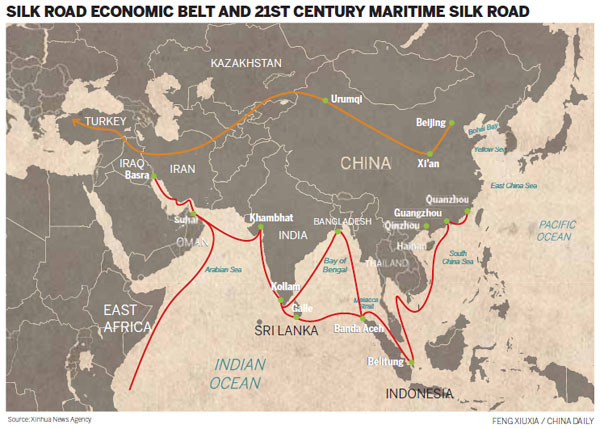Central bank chief: Common growth, mutual benefit to direct spending

The Silk Road Fund will target medium- and long-term projects that have strategic significance to support the "One Belt, One Road" initiative, said People's Bank of China Governor Zhou Xiaochuan.
President Xi Jinping said on Nov 8 that China will contribute $40 billion to set up a Silk Road Fund to provide investment and financing support for infrastructure construction, industrial cooperation and other projects related to connectivity for countries along the Silk Road Economic Belt and the 21st Century Maritime Silk Road.
The fund, which has started operating, is similar to the China-African Development Fund, which focuses on stimulating and facilitating Chinese investment in Africa.
But unlike private equity funds, which usually focus on investment periods of seven to 10 years, the Silk Road Fund will have an investment horizon of 15 years or more to support infrastructure development such as road and rail projects in developing economies, Zhou said.
"The 'One Belt, One Road' initiative is far-sighted, because it is flexible in terms of geographic boundaries and will cover a large number of developing countries. It will prompt China to further open up to the outside world and promote the common development of all economies," he said.
"China's economic strategy will not just focus on its own interests. It will put more emphasis on the opening-up and common development of developing countries and emerging markets. The executives of the Silk Road Fund will select projects based on the idea of mutual benefit and win-win cooperation."
He took issue with the comparison that some have drawn between the fund and the Marshall Plan, under which the United States provided more than $12 billion in economic support for the rebuilding of Western Europe after World War II.
"The Marshall Plan emerged from the special status of the US in the post-WWII period," he said. "China is a middle-income country with per capita GDP reaching just $7,000 and the Chinese are still striving for a relatively comfortable life. The situation of China in today's world is substantially different from that of the US after the war," he said.
The fund will make overseas investments using the country's "excessive deposits", including foreign reserves, he said.
The first phase of funding is $10 billion, of which $6.5 billion will come from foreign exchange reserves. China Investment Corp and the Export-Import Bank of China will contribute $1.5 billion each, while China Development Bank Corp will provide $500 million.
